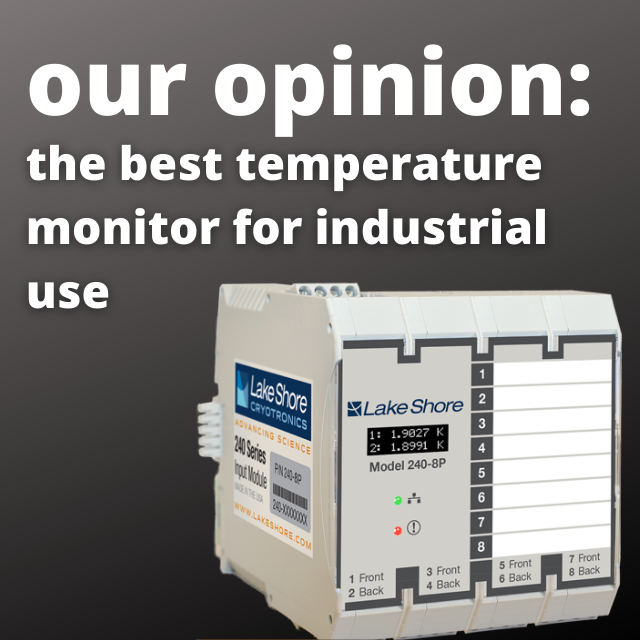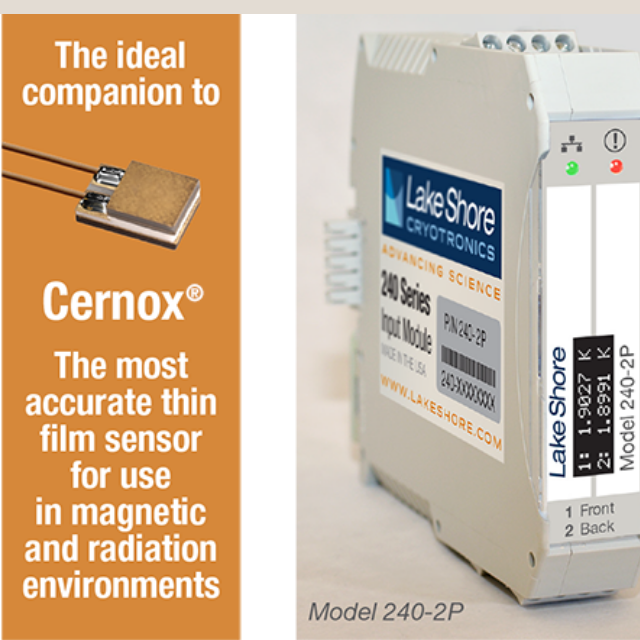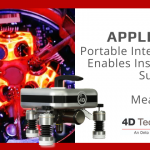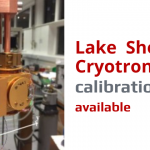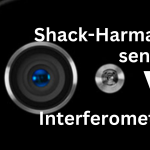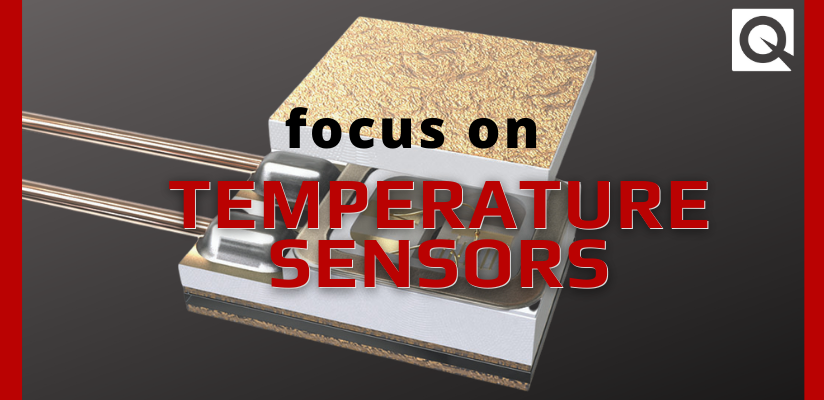

This month, we bring you the latest on temperature sensors, from our partners at Lake Shore Cryotronics. We’re really focusing on what sets them apart and why you would want to choose these over cheaper alternatives.
- The best for INDUSTRY
- Lake Shore’s Sensor Offering – a comprehensive guide
- OUR OPINION: The best temperature monitor line for industry
As always, if you have any questions, we have the contact details for our resident expert, Josh Hook, who would be delighted to run through your applications and requirements.
Lake Shore is able to measure the lowest temperatures available for a PRT – down to 14K


PT-100 platinum resistance thermometers (PRTs) are an excellent choice for use as cryogenic temperature sensing and control elements in the range from 30 K to 873 K (-243 °C to 600 °C). Over this temperature span, PRTs offer high repeatability and nearly constant sensitivity (dR/dT).
Sensor Overview
Lake Shore offers an extensive range of cryogenic temperature sensors. The following sensor summaries compare the performance and features of these sensors. For the full summaries and Sensitivity/Resistance graphs, click and download the Temperature Sensor Selection Guide.


Cernox ®
Specifically designed by Lake Shore for the demanding requirements of cryogenic applications, Cernox thin film RTD sensors offer extremely consistent high-resolution measurements over a wide temperature range. Due to the materials used and the physical structure of the chip, Cernox sensors are inherently resistant to magnetic-field induced offsets and damage by ionising radiation. This makes Cernox the first choice for any traditional cryostat system.
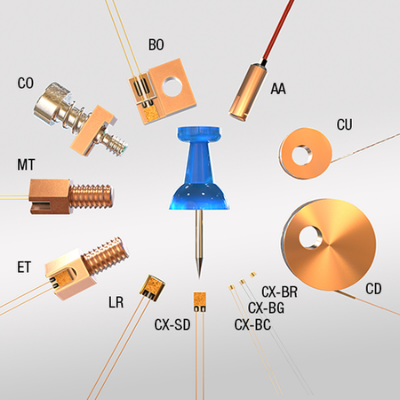

Silicon Diodes
Silicon diodes are an excellent general purpose sensor with a wide operating temperature range, from 1.4 K to 500 K. With their adherence to a standard curve, silicon diodes are interchangeable. This makes them less complicated to operate and maintain. Silicon diodes have excellent accuracy and resolution below 30 K, making them an outstanding choice below these temperatures. Above 30 K their sensitivity is reduced. Due to orientation dependent magnetic offsets and a high susceptibility to ionising radiation, silicon diodes are only suitable for purely cryogenic environments. A number of mounting options are available for the silicon diode package. This gives the user flexibility in attaching the sensor to the optimal measurement location of a given experiment or environment.
Lake Shore can match sensors to read within 0.1K of each other at liquid nitrogen temperatures
GaAlAs
Gallium aluminium arsenide (GaAlAs) diode cryogenic temperature sensors lack the standard curve and interchangeability attributed to silicon diodes, however, they are particularly well suited for low to moderate magnetic field applications at low temperatures. Being a single junction direct band-gap device, GaAlAs sensors are effective in moderate magnetic fields up to 5 T. Though sensitivity is poor above 50 K, the GaAlAs sensing element exhibits high sensitivity (dV/dT) at low temperatures and a wide useful temperature range of 1.4 K to 500 K. Cernox or silicon diodes would be preferable in most setups. However, in magnetic field-enabled systems with maximum temperatures above 420 K, GaAlAs sensors may be the best choice
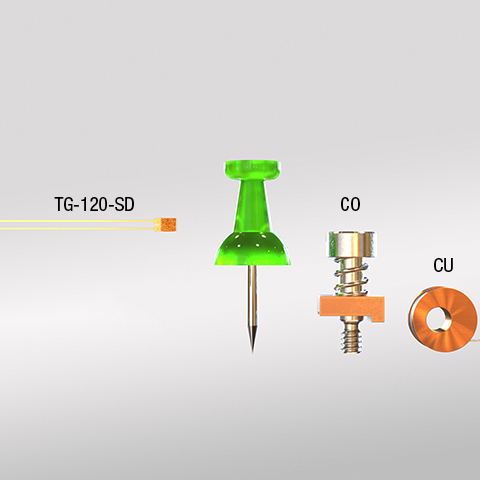

Rox™
The Rox family are all ruthenium-oxide RTDs, but have quite different characteristics. In general, these are low-temperature sensors with useful maximum temperatures of 40 K or less. Most Rox™ sensors are consistent enough to be considered interchangeable, with two accuracy bands available with each sensor model. Rox sensors are not suited for environments with ionizing radiation and also experience measurement shifts when exposed to magnetic fields, though these shifts can be compensated for. Four different Rox sensors are offered, each of them with different attributes suited to varied but specific environments and applications. Of the Rox models available, the RX-102 A is the most popular due to their interchangeability, low price, and sensitivity at liquid helium temperatures
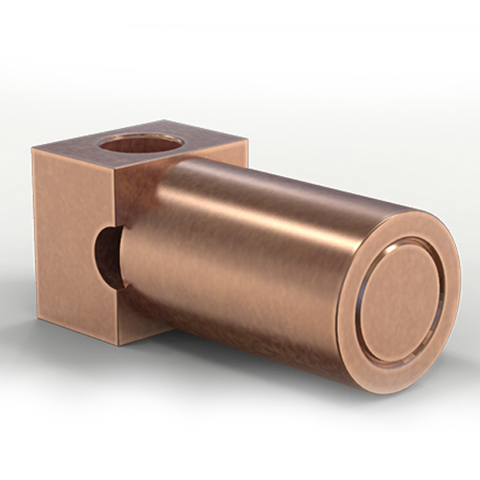

Platinum
Platinum resistance thermometers (PRTs) are very popular due to their low price and are useful in higher temperature systems with operating ranges from liquid nitrogen temperatures (77.35 K) to many hundreds of degrees Celsius, the only sensor capable of reading higher being thermocouples. Lake Shore’s 100 Ω PRTs adhere to the ISO standard temperature curve but have also been characterised for viable operation down to 14 K, making them the lowest temperature PRTs available. Above 70 K, PRTs offer high repeatability and nearly constant sensitivity (dR/dT). Platinum resistors are also useful in magnetic field environments where errors approaching one degree can be tolerated. The physical material used in PRTs withstands ionising radiation. Users may trade accuracy for price with PRTs as they can be purchased fully calibrated, partially calibrated, or uncalibrated.
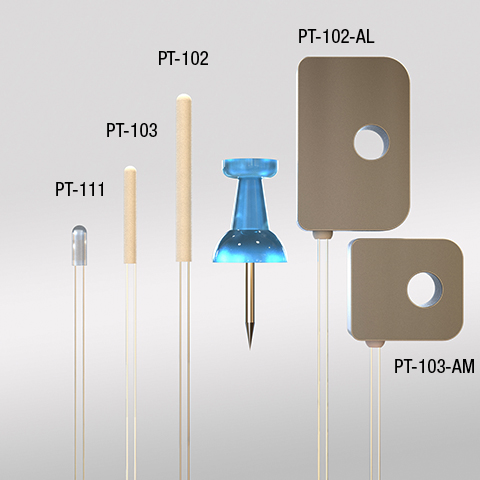

Lake Shore can also offer non-magnetic packaging options
Namely, the PT-102 and PT-103 variants of the sensors
Did You Know?
Lake Shore uses controlled-purity platinum – sensors ensuring uniformity between devices from one device to another.
Simplifying large-scale cryogenic temperature measurement
The 240 Series offers a convenient, modular input solution for precision monitoring of cryogenic temperature sensors in large-scale applications employing distributed PLC-based control.
Further Reading:
- More about the 240 Series
- Native fieldbus integration
- Built-in temperature conversion
- Simplifying sensor excitation
Find out more about Lake Shore and Temperature Sensors, and discuss your application!
Email Alex Murphy for more information



